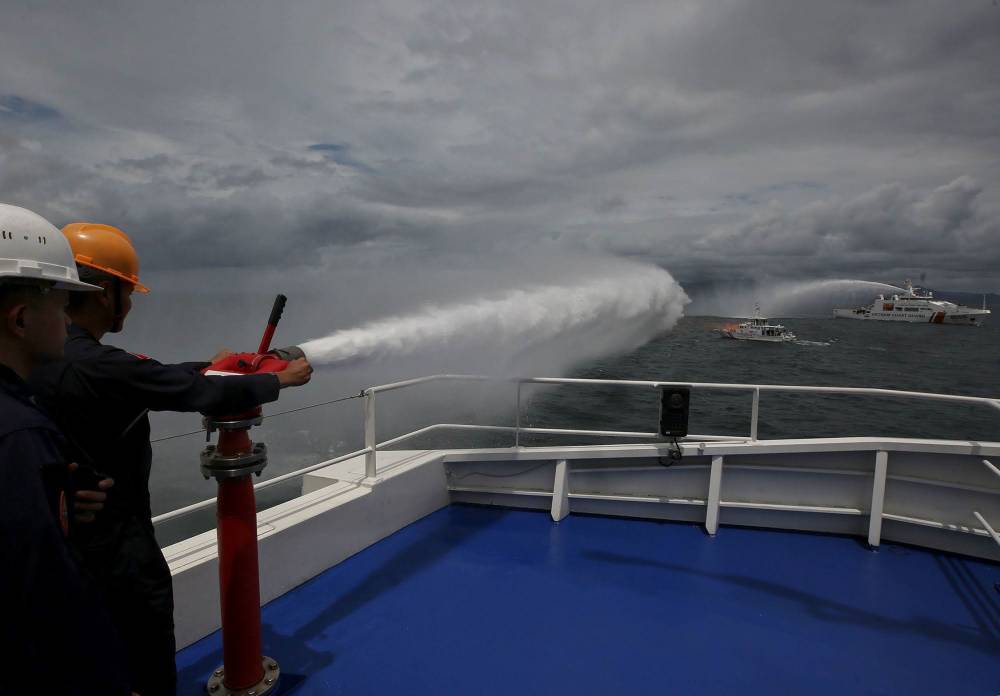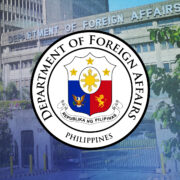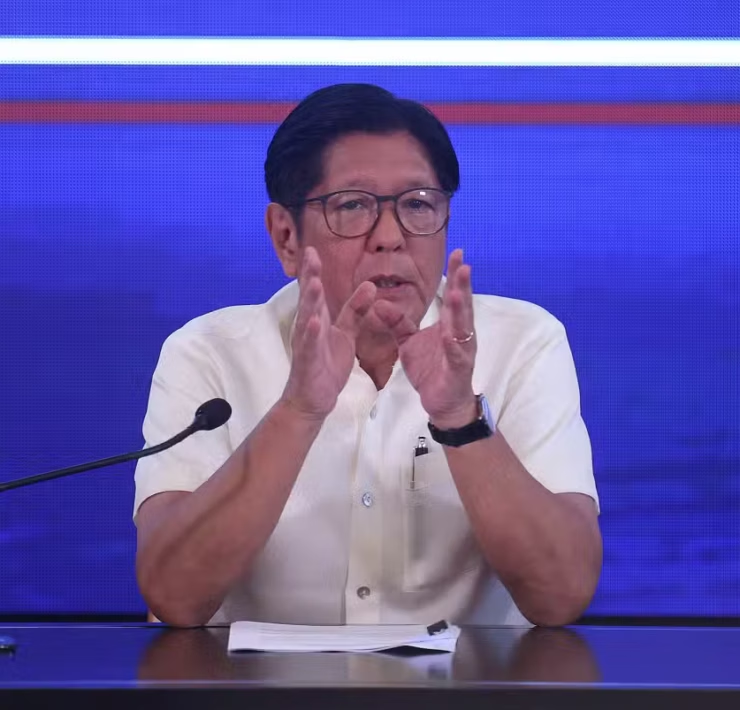Water cannon use part of PH-Vietnam drills in WPS

ABOARD THE BRP GABRIELA SILANG—The Philippines and Vietnam, countries with overlapping claims in the resource-rich South China Sea, completed their first joint maritime drills near the disputed waterway on Friday.
The Philippine Coast Guard’s (PCG) 83-meter offshore patrol vessel BRP Gabriela Silang and the Vietnam Coast Guard (VCG) ship CSB 8002 held joint drills some 14.8 kilometers (8 nautical miles) west of Corregidor Island in Bataan province, facing the West Philippine Sea (WPS), waters within Manila’s exclusive economic zone.
The drills, the Philippines’ first with another claimant country, were the result of two memorandums of understanding—on “incident prevention” and “maritime cooperation among coast guards”—signed between Manila and Hanoi in January.
The Vietnamese coast guard ship, with 80 crewmen onboard, arrived in Manila on Aug. 5 for a four-day goodwill visit and a series of engagements with its Philippine counterpart.
During Friday’s exercise, the two coast guards conducted search and rescue operations, firefighting and explosion drills, aerial surveillance, and a passing exercise.
One of the drills saw the Gabriela Silang, which frequently patrols the WPS, and the VCG vessel firing their water cannons on a third ship that was set on fire. They also deployed their rigid hull inflatable boats to simulate the rescue of a fisherman.
The use of water cannons stood out among the activities as it evoked memories of how the China Coast Guard had employed such tactics several times to block or harass Philippine vessels in the WPS, marking an escalation of tensions and diplomatic virulence between Manila and Beijing that would take weeks to simmer down.
‘Purely humanitarian’
Lt. Junior Grade Michael Buena of the PCG, the exercise director, said the joint drills were intended to improve interoperability between the Philippine and Vietnam coast guards.
Commanding Officer Lawrence Roque of the Gabriela Silang said they also demonstrated that it was possible for the Philippines to have “good collaboration” with a claimant nation in the South China Sea.
For members of the Association of Southeast Asian Nations, Roque said, “it is good to have one direction … a rules-based approach” in handling maritime disputes.
He stressed that joint drills were “purely a humanitarian exercise” and that VCG was in Philippine waters for “a humanitarian visit, a goodwill visit.”
“We hope to have more of this kind of activity,” he added.
Rear Adm. Armand Balilo, the PCG spokesperson, earlier said the drills would show that even rival claimants in the South China Sea could “cooperate and build a partnership.”
“This is a good template that can be used to de-escalate the situation that other claimants may follow in the future,” Balilo said.
The coast guard exercises were held ahead of the visit of Vietnamese Defense Minister Gen. Phan Văn Giang to the Philippines later this month. They were also held a day after the Philippines, United States, Canada and Australia concluded joint maritime drills also in the West Philippine Sea, near Palawan province.
Seamless coordination
In a statement on Friday, the Armed Forces of the Philippines said the four-nation maritime cooperative activity (MCA) further solidified “the operational readiness and cooperation” of the participating forces.
“The success of this MCA underscores the commitment of the Philippines and its allies to upholding international maritime security and promoting a free and open Indo-Pacific,” it said.
AFP chief Gen. Romeo Brawner Jr. said the exercise helped in “strengthening regional security and fostering deeper cooperation among allied nations.”
“The seamless coordination and execution of the planned activities highlight the strong defense relationships we share and our collective commitment to ensuring a stable and secure Indo-Pacific region,” Brawner said.
Aside from the Philippines and Vietnam, China, Malaysia, Brunei and Taiwan have overlapping claims in the South China Sea, a strategic waterway where about $3 trillion in trade passes through annually.





















